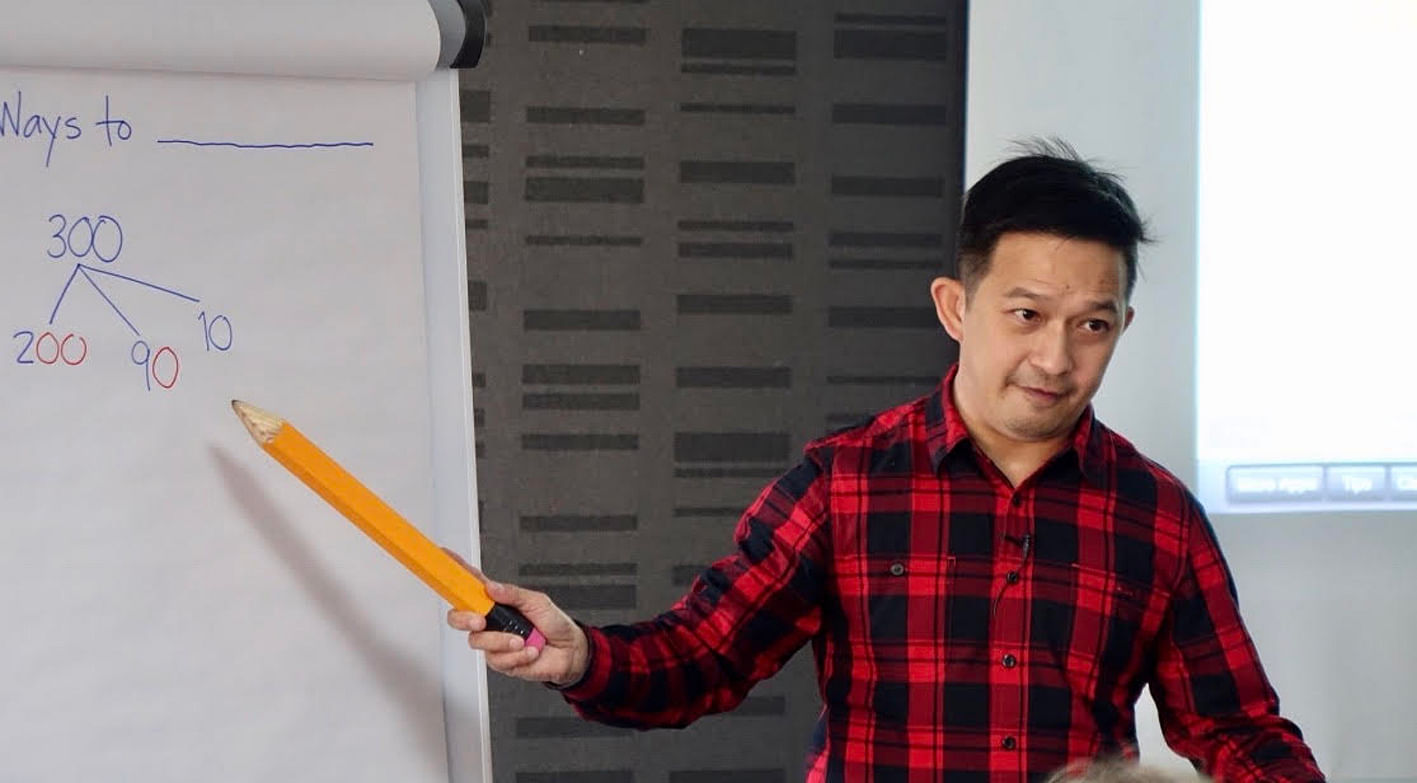Is PSLE maths really that hard?
The Primary 6 cohort had experienced almost two years of disruptions and less-than-ideal studying conditions, including home-based learning.PHOTO: LIANHE ZAOBAO
Stephanie Yeo
Senior Correspondent
Oct 24, 2021
SINGAPORE - Once again, parents are up in arms over the
Primary School Leaving Examination (PSLE) mathematics paper.
Just over three weeks ago, the now-infamous "Helen and Ivan" four-mark question made its rounds on social media, prompting both outrage and memes galore.
This newspaper reported complaints from aggrieved parents who said the "difficult paper" left their children in tears.
Outrage over the PSLE maths exam is not new. A quick check of The Straits Times' archives revealed similar complaints from parents in 2019, 2017 and 2015.
In 2000, 26 parents called the ST hotline because some of the questions required pupils to apply higher-order thinking skills, which they said their children had not been trained in.
This year's controversy, however, comes against the backdrop of the Covid-19 pandemic. The Primary 6 cohort had experienced almost two years of disruptions and less-than-ideal studying conditions, including home-based learning.
Added to that were fears over
the new PSLE grading system, which does away with the T-score in favour of an Achievement Level scoring system that is similar to the O levels.
Ms Stacy Cheng, 48, says her daughter Steffi, 12, told her that "the paper was okay, but some of her classmates broke down afterwards". Still, it was an emotionally fraught period for the family as Steffi was issued a leave of absence which ended just before her exams.
"I totally understand those parents who complained. This PSLE was especially stressful due to all the Covid-19 measures that changed every day," says the financial services director, who has two older children aged 17 and 20.
Why does PSLE maths spark such extreme reactions? Is it really that difficult?
On one hand, Singapore's maths syllabus has been celebrated around the world. Students shine in international tests, such as the Trends in International Mathematics and Science Study, in which local kids took the top spot in both subjects consecutively in 2019 and 2015.
Results for the 2019 edition were released late last year, and the test is administered by the International Association for the Evaluation of Educational Achievement, a non-profit research cooperative based in Amsterdam.
On the other hand, maths is the most popular tuition subject, according to a 2019 poll of 235 parents with primary school children who have tuition.
Sixty-five per cent of parents said their kids had maths tutors, versus 54 per cent for the second-most popular subject, English. The survey was commissioned by ST and conducted by consumer research firm Milieu Insight.
Maths expert Yeap Ban Har says international tests and studies measure the strength of the education system and show that "Singapore students are able to do what is expected".
National tests differ from country to country, Dr Yeap Ban Har explains. PHOTO: COURTESY OF YEAP BAN HAR
The former lecturer at the National Institute of Education has written maths textbooks for various education systems. He is director of curriculum and teacher development at Pathlight School for children with autism, and holds a similar portfolio at the Anglo Singapore International School In Bangkok.
"The pervasiveness of tuition in maths indicates parental expectations in the subject," he says. "I am sure anecdotally, we know of kids already doing very well in school maths who receive tutoring."
Parents see maths as a subject "where if you know the concept, you will be able to answer the exam questions" and score well, he says.
He adds that the "Singapore syllabus is far from an accelerated one" as children in the United States and England are introduced to certain mathematical concepts much earlier than their peers here.
For example, American kids learn about algebra in Grade 3, when they are about nine years old, while Singapore children do this in Primary 6 if they are taking the standard syllabus.
National tests differ from country to country, Dr Yeap explains. While some may measure the bare minimum, others like the PSLE aim to find out several things - "if students can do basics, if they can use maths in routine applications and, finally, if they can also handle novelty and complexity".
An example of a basic question would be: Find the value of 40 x 2.7
In comparison, a routine application question would look like this:
Helen has 40 fifty-cent coins and Ivan has 40 twenty-cent coins. Each fifty-cent coin is 2.7 g heavier than each twenty-cent coin. The total mass of Helen's coins is 264 g. What is the total mass of Ivan's coins?
The Helen and Ivan from this year's PSLE one qualifies as a novel and complex question:
Helen and Ivan have the same total number of coins. Helen has a number of fifty-cent coins, and 64 twenty-cent coins. The total mass of her coins is 1.134kg. Ivan has a number of fifty-cent coins and 104 twenty-cent coins.
(a) Who has more money in coins? How much more?
(b) Each fifty-cent coin is 2.7g heavier than each twenty-cent coin. What is the total mass of Ivan's coins in kg?
National tests differ from country to country. While some may measure the bare minimum, others like the PSLE aim to find out several things. PHOTO: ST FILE
Dr Yeap says: "The danger of having national tests that include only the basics is that students don't get opportunities to push their own thinking and have opportunities at skills that can open doors to subsequent opportunities."
He adds: "All kids should be fluent in the basics, able to apply concepts in routine, familiar content and have opportunities at challenging tasks, but they also need to know that as long as they have tried their best, that's good enough.
"Some adults can't accept this. They expect kids to be able to do everything, which is unrealistic."
Manager Y. Lim, 50, says she told her daughter that "it's really a test of her discipline and resilience, traits she needs to have her entire life and not just for the PSLE".
Her daughter, whom she declined to name, felt the PSLE maths paper was slightly easier than her school's preliminary exam paper, but was still not confident about her performance. "I asked if she cried. She said no, but she was crying on the inside," she says.
While she is concerned about her child's options for secondary school, the self-confessed "tiger mum" also reassured her daughter that she is loved unconditionally.
"All mothers love their children but may express it differently. This is what I tell my daughter, 'Will I be disappointed if you come back with bad grades? Of course I will be, just that my love for you will never change. Just like when you misbehave and I get angry with you, it doesn't mean I do not love you anymore.'"
She adds: "Grades are just one aspect of her life, but there are other aspects that need to be honed too."
Help your child with maths anxiety
"Nurturing kids who love maths or other subjects is a tall order as passion is in the hands of the kids," says Dr Yeap Ban Har. "I think the question is how we can help them to not mind the subject, to not have the anxiety that we sometimes hear about."
He and Ms Joy Tan, head of Learning Solutions at Marshall Cavendish Education, which publishes maths textbooks, offer tips for parents.
1. Avoid maths "tricks"
"Early rote memorising and mindless procedures can contribute to maths anxiety later," Dr Yeap says. "These activities will overload the working memory and make one feel inadequate."
Instead, teach kids to figure things out. For example, if they do not remember what 9x7 is, it is not a big deal. They can do 10x7, which is easier to remember, then subtract seven to get the same answer.
2. Build a good foundation in the basics
"Every kid knows that one apple plus one orange is not equal to two watermelons," he says.
"They know you need the nouns to be the same in order to add. Likewise with one-half plus one-third."
"It's important to get kids to learn the basics (such as the way we name fractions) well. Some kids say 'two upon three' instead of 'two-thirds' (number and noun). When the basics are not well learnt, doing harder things can be stressful."
3. Start a journal
Journalling helps children cope better with maths anxiety, says Ms Tan. She cites a 2014 research study which found that those who wrote about their fears outperformed those who did not.
4. Play maths games
Age-appropriate games are a fun way to introduce maths concepts, Ms Tan says. Parents should also help their children reflect on what they have learnt in this game, which is called metacognition.
"Metacognition is crucial for the deep understanding needed to be a competent problem solver in maths," she says.
During the game, parents could ask metacognitive questions to help children clarify their thinking, such as:
• How do you know that your answer is correct?
• What is a quick way to arrive at the correct answer?
• Are there other ways to find the answer?
• Why did you choose this method?
5. Boost body and mind
"Research has shown that physical exercise increases blood flow and connectivity in the hippocampus, a key region in the brain for memory formation and consolidation of learning," says Ms Tan.
PSLE parent Stacy Cheng also taught her daughter Steffi to put on an exam prep meditation from the Headspace app the night before every exam. "She also gave herself a pep talk just before all the papers to tell herself that she could do it," she says.









